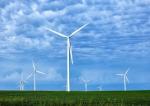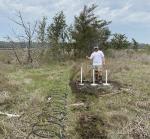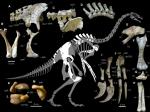
The best of Geology and Earth Science on the web

LATEST FROM THE GEOBLOGOSPHERE:
A large landslide near to Chanazana in Nabón, Ecuador

Categories: The Landslide Blog; Ecuador; Hazards & Disasters; landslides; South America;
HUMPBACK WHALES OF THE WEST COAST
Categories: captain; coast; first; humpback; hunting; island; KWAKIUTL; nation; norwegian; sea; Vancouver; west; whale; whaling;
EPA’s Attacks on Greenhouse Gas Reduction Fund and the Fate of IRA’s “Green Banks”

Categories: climate litigation; Greenhouse gas emissions; Inflation Reduction Act;
The Metals Company has a Jones Act Problem
Categories: Featured; News; Policy; deep-sea mining; Gulf of Mexico; Jones Act; The Metals Company;
Emissions from Coal-Fired Power Plants May Lower Crop Yields in India

Categories: News; agriculture; air pollution; climate; coal; Earth science; India; Modeling;
How to make your EGU25 presentation accessible!

Categories: Accessibility and inclusivity at EGU; Conferences; EGU GA 2025; Science Communication; Sessions; Vienna; Accessibility; auto-captions; colour vision deficiency; digital conference; EGU25; European Geosciences Union General Assembly; online conference; online presenting tips; rainbow scales; visual accessibilty;
New papers on paleoseismology, active tectonics, and archaeoseismology (April 2025)
Categories: Paper; abstract; earthquake; environmental effects; fault; paleoseismology; paper;
UNEARTHING FOSSIL BIRD BONES ON SOUTHERN VANCOUVER ISLAND
Categories: author; BIRD; Blog; fossil; fossilhuntress; Heidi; Henderson; huntress; island; paleontologist; paleontology; podcast; Vancouver; woman; women; writer;
We Have the Power To Protect Our Planet
Categories: Energy; Sustainability; cs highlights; Earth Day; renewable energy;
1,900 Scientists Warn Of “Real Danger” In Open Letter

Categories: Research & Developments; climate; Climate Change; culture & policy; Education & Careers; public health;
The Rivers That Science Says Shouldn’t Exist

Categories: Research Spotlights; Earth science; geomorphology; North America; rivers; South America; Water Resources Research; weird & wonderful;
Coastal Hydrogeology: Understanding Local Factors Controlling Ecology and Habitat Resiliency on Waties Island, South Carolina

Categories: Field Geology; Reflection; Science Communication; earth science; geology; geoscience; science communication;
Introducing Duonychus tsogtbaatari

Categories: Earth Science; Cretaceous; dinosaur evolution; Mongolia; palaeobiology; Therizinosauria;
Climate Scientists Unite to Nominate U.S. Experts for IPCC Report

Categories: Research & Developments; climate; Climate Change; culture & policy; IPCC; science policy;
Poets and Polders
Categories: Climate; Earth Sciences; Poverty / Development; Sustainability; climate; Geohazards in Bangladesh; Lamont-Doherty Earth Observatory; sustainable development; water matters;
All-geo.org


